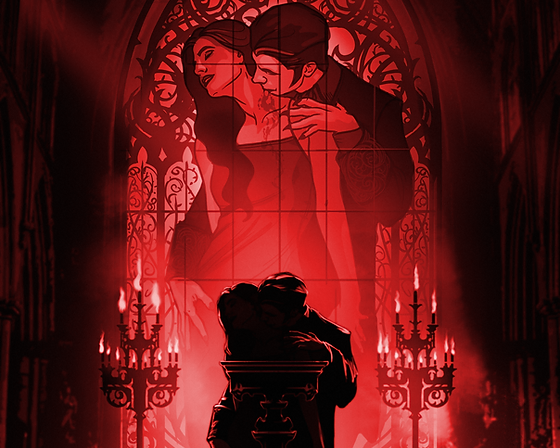Onyx Path recently released the ashcan edition of the new urban fantasy TTRPG Curseborne to coincide with their virtual gaming convention, and the comparisons to their recently mothballed Chronicles of Darkness game are inevitable.
Onyx Path supported Chronicles of Darkness, or CofD for short, for two decades through 11 different game lines. Each line had its own distinct identity and a deep setting filled with drama, such as the Gothic Vampire: The Requiem and the mind-bending Mage: The Awakening, but in recent months it has become clear that diehard fans will need to look somewhere else for new urban fantasy experiences.
Enter Curseborne, which may wish to be considered on its own terms, but has a tough act to follow. Overall, I feel Curseborne has solid mechanics and a lot of potential, but it lacks the rich setting and nuanced character options I would like to see in an urban fantasy game. I hope that when this hits crowdfunding sites in October later this year, we see greater variety within each supernatural lineage and a more evocative setting.
The monster within
Aesthetically, Curseborne draws heavily on decaying urban environments, uncanny monsters, and modern gothic tropes. The characters are all Accursed: supernatural beings who all fight their own darkest natures and juggle the practicalities of survival with the need to camouflage themselves amongst the easily frightened herd of humanity. Curseborne sees supernaturals as part of an interlinked society, but so far the aschan gives us little indication of how they plan to mine such a rich vein of drama.
The ‘lineages’ of Curseborne characters are themed broadly: the Dead, the Hungry, the Outcasts, the Primal, and the Sorcerers. Unfortunately, the Lineages feel one-dimensional, emphasized by mechanics that seem to pigeonhole them further. The official website for Curseborne advertises that the game will have “Thirty-plus different playable character options” but from the ashcan, I don’t get any sense of that sort of variety. With the possibility of single-lineage groups mentioned on the site, I am left to wonder what a group of Hungry or Dead characters would have to distinguish themselves from one another.
The ashcan mentions that more options for the darker side of the Lineages (called Torments) will be available in the full release, and Sorcerers are only teased here, but whether there is even scope within the Lineages for more intriguing character variety remains to be seen. Players wanting to recapture the depth of Chronicles of Darkness‘s approach to supernaturals will undoubtedly end up frustrated by the somewhat lackluster options revealed here. Similarly, the rich supernatural societies and mythology of Chronicles of Darkness are nowhere to be seen. Under-explained elements like the families (sub-types of supernaturals) that all characters belong to could have done a lot of work in evoking the sorts of conflicts a character might run into.

Storypath Ultra
The system is an adaptation of the Storypath system used by Trinity Continuum, They Came From and Scion, and many of the elements will be familiar to Onyx Path fans: it uses a pool of d10s made up of a skill rating and an attribute rating, with dice that come up 8, 9 or 10 counting as a success and 10’s as two successes. Additional successes can be spent to buy off complications or add extra benefits to a roll, giving rolls narrative depth. Status effects and complications give flexibility to Storyguides in how to give rolls mechanical consequences while still keeping things moving and act as an evolution of the conditions and tilts system from Chronicles of Darkness, which was one of its most robust innovations.
Curseborne clearly flags that its designers value investigation and social drama as much as combat, which is a high priority for urban fantasy games that thrive on mystery and angst, with dedicated sections on how to run each type of game scene. Meanwhile, curse dice, which add to a character’s pool as they become more connected with their Accursed nature, are an intriguing representation of the dance between humanity and monstrousness that the second editions of the Chronicles of Darkness lines did so well.
Untapped potential
As a teaser, the ashcan of Curseborne does a lot, and yet I still feel that I don’t understand what makes the setting and characters tick. In a hobby with competing systems that already present nuanced supernatural characters and societies, Curseborne might need to step it up to capture the popular imagination. I will certainly be following Curseborne‘s development with interest, but I won’t be retiring my Chronicles of Darkness collection just yet.






Published: Jul 23, 2024 02:21 pm